Adolescence
During adolescence we morph from child to adult. Adolescence starts with a physical event—bodily changes that mark the beginning of sexual maturity. It ends with a social event—independent adult status, which means that in cultures where teens are self-supporting, adolescence hardly exists.
Physical Development
3-11 What defines adolescence, and what major physical changes occur during adolescence?
Adolescence begins with puberty, the time when we mature sexually. Puberty follows a surge of hormones, which may intensify moods and which trigger a series of bodily changes, outlined in Chapter 4, Gender and Sexuality.

Just as in the earlier life stages, we all go through the same sequence of changes in puberty. All girls, for example, develop breast buds and pubic hair before menarche, their first menstrual period. The timing of such changes is less predictable. Some girls start their growth spurt at 9, some boys as late as age 16. Maturing earlier or later than your peers has little effect on adult physical features, such as your final height. It is not when we mature that counts, but how people react to our physical development.
For boys, early maturation has mixed effects. Boys who are stronger and more athletic during their early teen years tend to be more popular, self-assured, and independent, though also more at risk for alcohol use, delinquency, and premature sexual activity (Conley & Rudolph, 2009; Copeland et al., 2010; Lynne et al., 2007). For girls, early maturation can be a challenge (Mendle et al., 2007). If a young girl’s body and hormone-fed feelings are too far beyond her emotional maturity and her friends’ physical development and experiences, she may search out older teens or may suffer teasing or sexual harassment (Ge & Natsuaki, 2009).
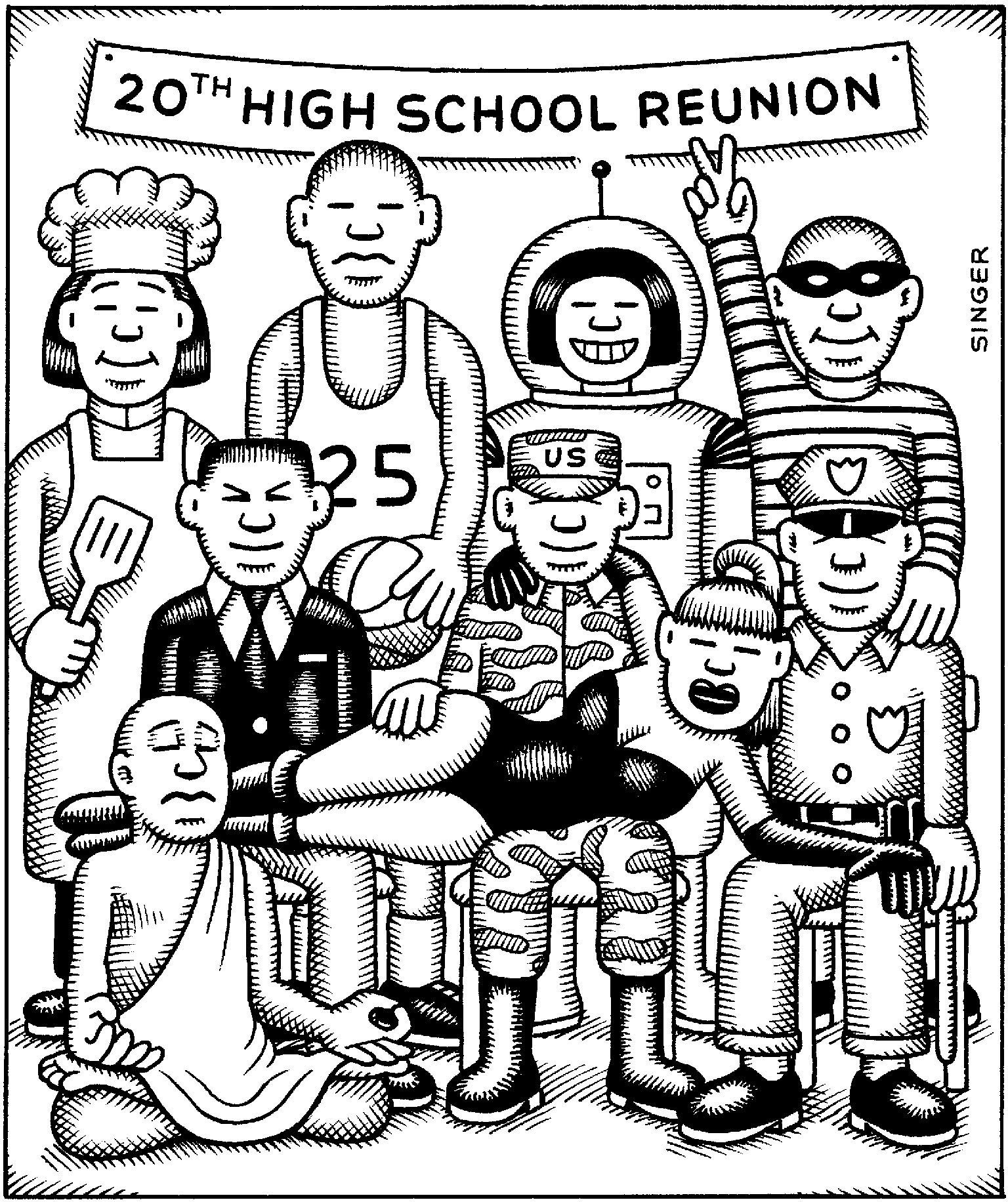
An adolescent’s brain is also a work in progress. This is the time when unused neurons and their connections are pruned (Blakemore, 2008). What we don’t use, we lose.
As teens mature, their frontal lobes also continue to develop. But frontal lobe maturation lags behind the development of the emotional limbic system. When puberty’s hormonal surge combines with limbic system development and unfinished frontal lobes, it’s no wonder teens feel stressed. Impulsiveness, risky behaviors, and emotional storms—slamming doors and turning up the music—happen (Casey et al., 2008). Not yet fully equipped for making long-term plans and curbing impulses, young teens may give in to the lure of smoking. (Adult smokers often tell them that they will later regret that move.) Teens typically know the risks of smoking, fast driving, unprotected sex. They just, reasoning from their gut, weigh the benefits of risky behaviors more heavily (Reyna & Farley, 2006; Steinberg, 2010). They seek thrills and rewards, but they can’t always locate the brake pedal controlling their impulses.

So, when Junior drives recklessly and academically self-destructs, should his parents reassure themselves that “he can’t help it; his frontal cortex isn’t yet fully grown”? They can at least take hope: The brain with which Junior begins his teens differs from the brain with which he will end his teens. Unless he slows his brain development with heavy drinking, his frontal lobes will continue maturing until about age 25 (Beckman, 2004). Better communication between the frontal lobes and other brain regions will bring improved judgment, impulse control, and the ability to plan for the long term.
In 2004, the American Psychological Association joined seven other medical and mental health associations in filing U.S. Supreme Court briefs arguing against the death penalty for 16- and 17-year-olds. They presented evidence for the teen brain’s immaturity “in areas that bear upon adolescent decision-making.” Teens are “less guilty by reason of adolescence,” suggested psychologist Laurence Steinberg and law professor Elizabeth Scott (2003; Steinberg et al., 2009). In 2005, by a 5-to-4 margin, the Court agreed, declaring juvenile death penalties unconstitutional.
Cognitive Development
3-12 How did Piaget, Kohlberg, and later researchers describe cognitive and moral development during adolescence?
During the early teen years, reasoning is often self-focused. Adolescents may think their private experiences are unique, something parents just couldn’t understand: “But, Mom, you don’t really know how it feels to be in love” (Elkind, 1978). Capable of thinking about their own thinking and about other people’s thinking, they also begin imagining what other people are thinking about them. (They might worry less if they understood their peers’ similar self-focus.) Gradually, though, most begin to reason more abstractly.
Developing Reasoning Power
When adolescents achieve the intellectual peak Jean Piaget called formal operations, they apply their new abstract thinking tools to the world around them. They may debate human nature, good and evil, truth and justice. Having left behind the concrete images of early childhood, they may search for a deeper meaning of life (Elkind, 1970; Worthington, 1989). They can now reason logically. They can spot hypocrisy and detect inconsistencies in others’ reasoning (Peterson et al., 1986). (Can you remember having a heated debate with your parents? Did you perhaps even vow silently never to lose sight of your own ideals?)

Larry Downing/Reuters/Newscom
Developing Morality
Two crucial tasks of childhood and adolescence are determining right from wrong and developing character—the psychological muscles for controlling impulses. To be a moral person is to think morally and act accordingly. Jean Piaget and Lawrence Kohlberg proposed that moral reasoning guides moral actions. A more recent view builds on psychology’s game-changing new recognition that much of our functioning occurs not on the “high road” of deliberate, conscious thinking but on the “low road” of unconscious, automatic thinking.
MORAL THINKING Piaget (1932) believed that children’s moral judgments build on their cognitive development. Agreeing with Piaget, Lawrence Kohlberg (1981, 1984) sought to describe the development of moral reasoning, the thinking that occurs as we consider right and wrong. Kohlberg posed moral dilemmas—for example, should a person steal medicine to save a loved one’s life? He then asked children, adolescents, and adults whether the action was right or wrong. He believed their answers would give evidence of stages of moral thinking. His findings led him to propose three basic levels of moral thinking, preconventional, conventional, and postconventional (TABLE 3.2). Kohlberg claimed these levels form a moral ladder. As with all stage theories, the sequence never changes. We begin on the bottom rung and rise to varying heights. Kohlberg’s critics have noted that his postconventional level is culturally limited. It appears mostly among people who prize individualism—giving priority to one’s own goals (Eckensberger, 1994; Miller & Bersoff, 1995). This theory, add its critics, is biased against collectivist (group-centered) societies, such as China and India, which place more value on group goals.
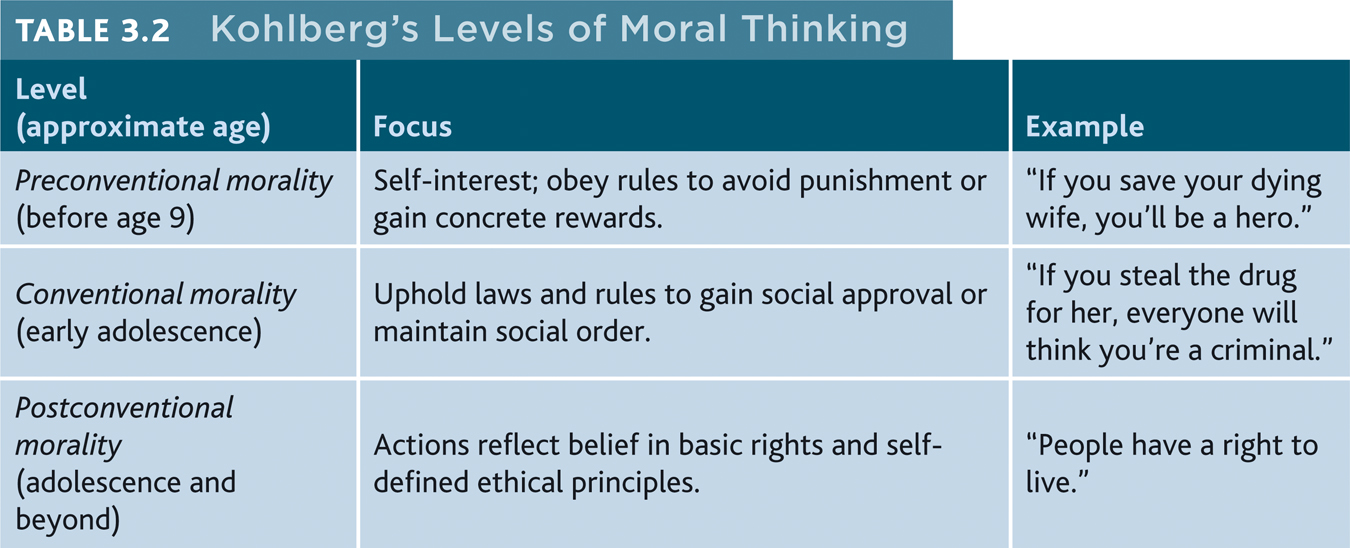
MORAL INTUITION According to psychologist Jonathan Haidt (2002, 2006, 2010) much of our morality is rooted in moral intuitions—“quick gut feelings.” In this view, the mind makes moral judgments quickly and automatically. We feel elevation—a tingly, warm, glowing feeling in the chest—when seeing people display exceptional generosity, compassion, or courage. Such feelings in turn trigger moral reasoning, says Haidt.
This viewpoint on morality finds support in a study of moral decisions. Imagine seeing a runaway trolley headed for five people. All will certainly be killed unless you throw a switch that diverts the trolley onto another track, where it will kill one person. Should you throw the switch? Most say Yes. Kill one, save five.
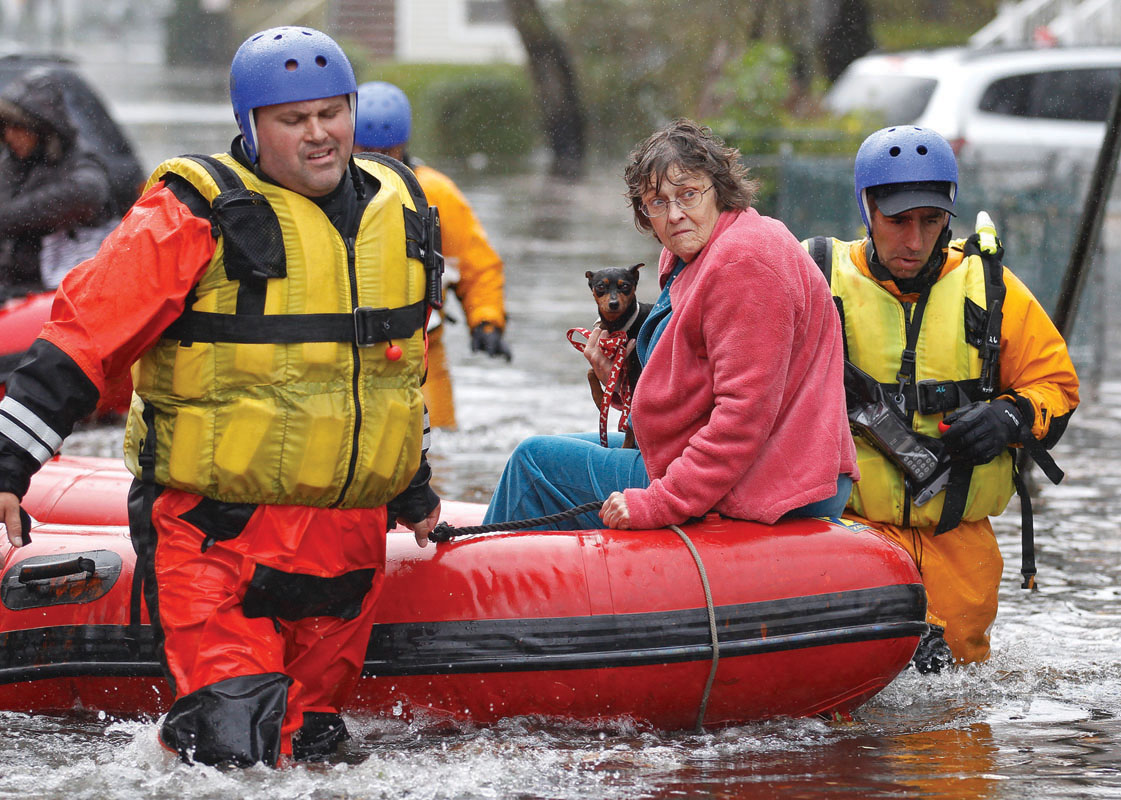
Now imagine the same dilemma, with one change. This time, your opportunity to save the five requires you to push a large stranger onto the tracks, where he will die as his body stops the trolley. Kill one, save five? The logic is the same, but most say No. Seeking to understand why, researchers used brain imaging to spy on people’s neural responses as they considered such problems (Greene, 2001). Despite the identical logic, only the body-pushing type of moral choice activated their brain’s emotion areas. The point: Emotions feed moral intuitions.
While the new research shows that moral intuitions can beat moral reasoning, other research reaffirms the importance of moral reasoning. The religious and moral reasoning of the Amish, for example, shapes their practices of forgiveness, communal life, and modesty (Narvaez, 2010). Joshua Greene (2010) likens our moral cognition to a camera. Usually, we rely on the automatic point-and-shoot mode. But sometimes we use reason to manually override the camera’s automatic impulse.
MORAL ACTION Today’s character-education programs focus both on moral reasoning and on doing the right thing. They teach children empathy for others’ feelings. They also teach the self-discipline needed to restrain one’s own impulses—to delay small pleasures now to earn bigger rewards later. Those who have learned to delay gratification have become more socially responsible, academically successful, and productive (Funder & Block, 1989). In one of psychology’s famous experiments, Walter Mischel (1988, 1989) gave 4-year-old preschoolers a choice between one marshmallow now, or two marshmallows when he returned a few minutes later. The children who had the willpower to delay gratification went on to have higher college completion rates and incomes, and less often suffered addiction problems.
In service-learning programs, where teens have tutored, cleaned up their neighborhoods, and assisted older adults, everyone has benefited. The teens’ sense of competence and their desire to serve have increased, and their school absenteeism and drop-out rates have decreased (Andersen, 1998; Piliavin, 2003). Moral action feeds moral attitudes.
RETRIEVE + REMEMBER
Question 3.6
 According to Kohlberg, _______ morality focuses on upholding laws and social rules, _______ morality focuses on self-interest, and ______ morality focuses on self-defined ethical principles.
According to Kohlberg, _______ morality focuses on upholding laws and social rules, _______ morality focuses on self-interest, and ______ morality focuses on self-defined ethical principles.
conventional; preconventional; postconventional
Social Development
3-13 According to Erikson, what stages—and accompanying tasks and challenges—mark our psychosocial development?
Erik Erikson (1963) believed that we must resolve a specific crisis at each stage of life. Thus, each stage has its own psychosocial task. Young children wrestle with issues of trust, then autonomy (independence), then initiative. School-age children strive for competence—feeling able and productive. The adolescent’s task is to blend past, present, and future possibilities into a clearer sense of self. Adolescents wonder, “Who am I as an individual? What do I want to do with my life? What values should I live by? What do I believe in?” Such questions, said Erikson, are part of the adolescent’s search for identity (TABLE 3.3).

Forming an Identity
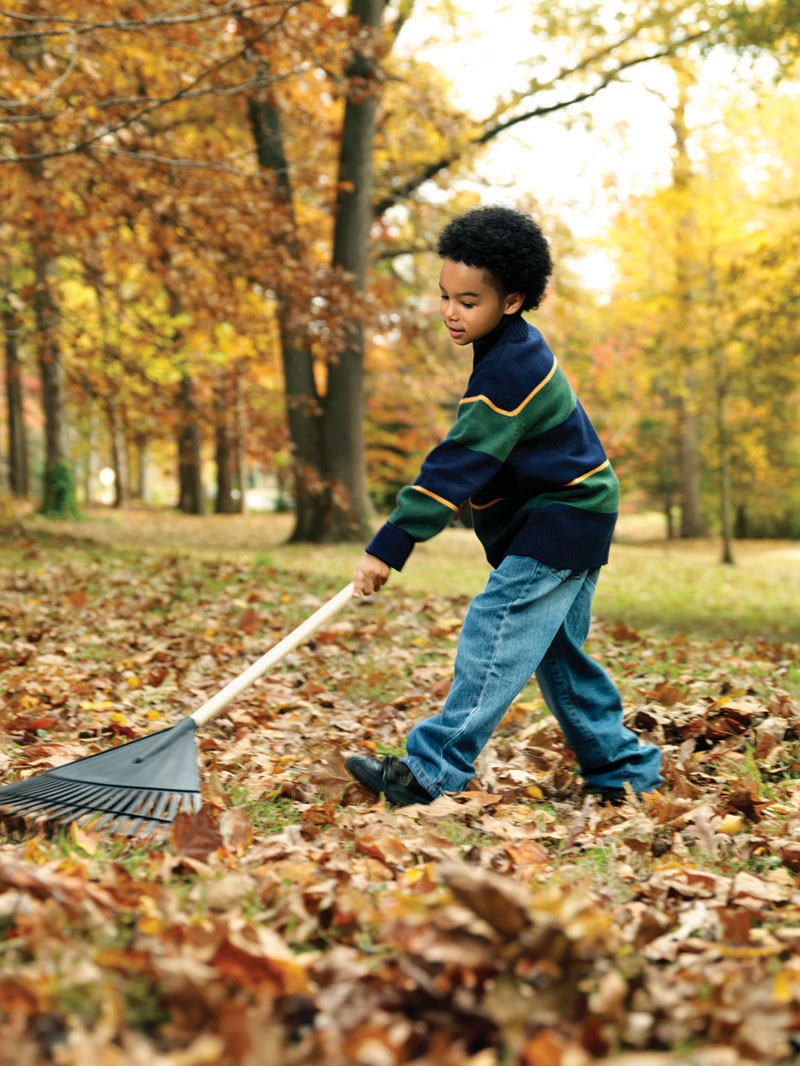

To refine their sense of identity, adolescents in Western cultures usually try out different “selves” in different situations. They may act out one self at home, another with friends, and still another at school or on Facebook. Sometimes these separate worlds overlap. Do you remember having your friend world and family world bump into each other, and wondering, “Which self should I be? Which is the real me?” Most of us make peace with our various selves. In time, we blend them into a stable and comfortable sense of who we are—an identity.

For both adolescents and adults, our group identities are often formed by how we differ from those around us. When living in Britain, I become conscious of my Americanness. When spending time with my daughter in Africa, I become conscious of my minority White race. When surrounded by women, I am mindful of my gender identity. For international students, for those of a minority ethnic group, for people with a disability, for gays and lesbians, a social identity often forms around their distinctiveness.
But not always. Erikson noticed that some adolescents bypass this period. Some forge their identity early, simply by taking on their parents’ values and expectations. Others may adopt the identity of a particular peer group—jocks, preps, geeks, goths.
Cultural values may influence teens’ search for an identity. Traditional, more collectivist cultures teach adolescents who they are, rather than encouraging them to decide on their own. In individualist Western cultures, young people may continue to try out possible roles well into their late teen years, when many people begin attending college or working full time. During the early to mid-teen years, self-esteem falls and, for girls, depression scores often increase. Then, during the late teens and twenties, self-image bounces back (Erol & Orth, 2011; Robins et al., 2002; Twenge & Nolen-Hoeksema, 2002). Agreeableness and emotional stability also increase during late adolescence and early adulthood (Klimstra et al., 2009; Lucas and Donnellan, 2011).
Erikson believed that the adolescent identity formation (which continues into adulthood) is followed in young adulthood by a developing capacity for intimacy, the ability to form emotionally close relationships. With a clear and comfortable sense of who you are, said Erikson, you are ready for close relationships. Such relationships are, for most of us, a source of great pleasure.
Parent and Peer Relationships
3-14 To what extent are adolescent lives shaped by parental and peer influences?
As adolescents in Western cultures seek to form their own identities, they begin to pull away from their parents (Shanahan et al., 2007). The preschooler who can’t be close enough to her mother, who loves to touch and cling to her, becomes the 14-year-old who wouldn’t be caught dead holding hands with Mom. The transition occurs gradually, but this period is typically a time when parental influence wanes and peer influence grows. As ancient Greek philosopher Aristotle long ago recognized, we humans are “the social animal.” At all ages, but especially during childhood and the teen years, we seek to fit in with our groups and are influenced by them (Harris, 1998, 2000). Consider:
- Children who hear English spoken with one accent at home and another in the neighborhood and at school will adopt the accent of the peers, not the parents. Accents (and slang) reflect culture, “and children get their culture from their peers,” noted Judith Rich Harris (2007).
- Teens who start smoking typically have friends who model smoking, suggest its pleasures, and offer cigarettes (J. S. Rose et al., 1999; R. J. Rose et al., 2003). Part of this peer similarity may result from a selection effect, as kids seek out peers with similar attitudes and interests. Those who smoke (or don’t) may select as friends those who also smoke (or don’t).
“Men resemble the times more than they resemble their fathers.”
Ancient Arab proverb
- When researchers used a beeper to sample the daily experiences of American teens, they found them unhappiest when alone and happiest when with friends (Csikszentmihalyi & Hunter, 2003).
By adolescence, parent-child arguments occur more often, usually over ordinary things—household chores, bedtime, homework (Tesser et al., 1989). For a minority of families, these arguments lead to real splits and great stress (Steinberg & Morris, 2001). But most disagreements are at the level of harmless bickering. With sons, the issues often are behavior problems, such as acting out or hygiene. For daughters, the conflict commonly involves relationships, such as dating and friendships (Schlomer et al., 2011). Nevertheless, most adolescents—6000 of them in 10 countries, from Australia to Bangladesh to Turkey—have said they like their parents (Offer et al., 1988). They often report, “We usually get along but…” (Galambos, 1992; Steinberg, 1987).
Positive parent-teen relations and positive peer relations often go hand in hand. High school girls who had the most affectionate relationships with their mothers tended also to enjoy the most intimate friendships with girlfriends (Gold & Yanof, 1985). And teens who felt close to their parents have tended to be healthy and happy and to do well in school (Resnick et al., 1997). But pause now to think critically. Look what happens if you state this association another way: Teens in trouble are more likely to have tense relationships with parents and other adults. Remember: Correlations don’t prove cause and effect.
As we saw earlier, heredity does much of the heavy lifting in forming individual temperament and personality differences. Parents and peers influence teens’ behaviors and attitudes. (See Thinking Critically About: How Much Credit or Blame Do Parents Deserve?)
Most teens are herd animals. They talk, dress, and act more like their peers than their parents. What their friends are, they often become, and what “everybody’s doing,” they often do. Part of what everybody’s doing is networking—a lot. On a typical day, the average U.S. teen sends 60 text messages (Pew, 2012). Many become absorbed by social networking, sometimes with a compulsive use that produces “Facebook fatigue.” Online communication prompts intimate self-disclosure, both for better (support groups) and for worse (online predators and extremist groups) (Subrahmanyam & Greenfield, 2008; Valkenburg & Peter, 2009).
For those who feel excluded by their peers, the pain is acute. “The social atmosphere in most high schools is poisonously clique-driven and exclusionary,” observed social psychologist Elliot Aronson (2001). Most excluded teens “suffer in silence…. A small number act out in violent ways against their classmates.” Those who withdraw are vulnerable to loneliness, low self-esteem, and depression (Steinberg & Morris, 2001). Peer approval matters.
Teens see their parents as having more influence in other areas—for example, in shaping their religious faith and in thinking about college and career choices (Emerging Trends, 1997). A Gallup Youth Survey revealed that most share their parents’ political views (Lyons, 2005).
“I love u guys.”
Emily Keyes’ final text message to her parents before dying in a Colorado school shooting, 2006.
Howard Gardner (1998) has concluded that parents and peers are complementary:
Parents are more important when it comes to education, discipline, responsibility, orderliness, charitableness, and ways of interacting with authority figures. Peers are more important for learning cooperation, for finding the road to popularity, for inventing styles of interaction among people of the same age. Youngsters may find their peers more interesting, but they will look to their parents when contemplating their own futures. Moreover, parents [often] choose the neighborhoods and schools that supply the peers.
The investment in raising a child buys many years not only of joy and love but of worry and irritation. Yet for most people who become parents, a child is one’s biological and social legacy—one’s personal investment in the human future. To paraphrase psychiatrist Carl Jung, we reach backward into our parents and forward into our children, and through their children into a future we will never see, but about which we must therefore care.
RETRIEVE + REMEMBER
Question 3.7
 What is the selection effect, and how might it affect a teen’s decision to join sports teams at school?
What is the selection effect, and how might it affect a teen’s decision to join sports teams at school?
Adolescents tend to select similar others and to sort themselves into like-minded groups. For an athletic teen, this could lead to finding other athletic teens and joining school teams together.
THINKING CRITICALLY ABOUT
How Much Credit or Blame Do Parents Deserve?
3-15 Does parenting matter?

Ryan Anson/Bloomberg/Getty Images
Parents usually feel enormous satisfaction in their children’s successes, and feel guilt or shame over their failures. They beam over the child who wins an award. They wonder where they went wrong with the child who is repeatedly called into the principal’s office. Freudian psychiatry and psychology have been among the sources of such ideas, by blaming problems from asthma to schizophrenia on “bad mothering.” Society has reinforced parent blaming. Believing that parents shape their offspring as a potter molds clay, people readily praise parents for their children’s virtues and blame them for their children’s vices.
But do parents really damage these future adults by being (take your pick from the toxic-parenting lists) overbearing—or uninvolved? Pushy—or weak? Overprotective—or distant? Are children really so easily wounded? If so, should we then blame our parents for our failings, and ourselves for our children’s failings? Or does all the talk of wounding fragile children through normal parental mistakes trivialize the brutality of real abuse?

Parents do matter. The power of parenting is clearest at the extremes: the abused who become abusive, the neglected who become neglectful, the loved but firmly handled children who become self-confident and socially competent. The power of the family environment also appears in the remarkable academic and vocational successes of children of people who fled from Vietnam and Cambodia—successes attributed to close‑knit, supportive, even demanding families (Caplan et al., 1992).
Yet in personality measures, shared environmental influences from the womb onward typically account for less than 10 percent of children’s personality differences. In the words of Robert Plomin and Denise Daniels (1987; Plomin, 2011), “Two children in the same family are [apart from their shared genes] as different from one another as are pairs of children selected randomly from the population.” To developmental psychologist Sandra Scarr (1993), this meant that “parents should be given less credit for kids who turn out great and blamed less for kids who don’t.” Knowing that children are not easily sculpted by parental nurture, perhaps parents can relax a bit more and love their children for who they are.
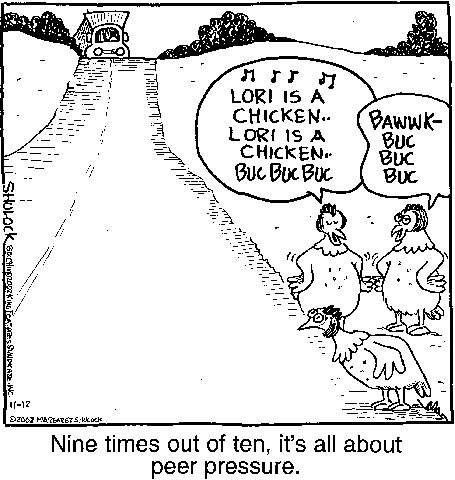
The genetic leash may limit the family environment’s influence on personality, but does it mean that adoptive parenting is a fruitless venture? No. Parents do influence their children’s attitudes, values, manners, faith, and politics (Brodzinsky & Schechter, 1990). A pair of adopted children or identical twins will, if raised together, have more similar religious beliefs, especially during adolescence (Kelley & De Graaf, 1997; Koenig et al., 2005; Rohan & Zanna, 1996).
Child neglect, abuse, and parental divorce are rare in adoptive homes, in part because adoptive parents are carefully screened. Despite a somewhat greater risk of psychological disorder, most adopted children thrive, especially when adopted as infants (Benson et al., 1994; Wierzbicki, 1993). Seven in eight report feeling strongly attached to one or both adoptive parents. As children of self-giving parents, they themselves grow up to be more self-giving than average (Sharma et al., 1998). Many score higher than their biological parents on intelligence tests, and most grow into happier and more stable adults. Regardless of personality differences between parents and their adoptees, children benefit from adoption. Parenting matters!
Emerging Adulthood
3-16 What are the characteristics of emerging adulthood?
In the Western world, adolescence now roughly equals the teen years. At earlier times, and in other parts of the world today, this slice of life has been much smaller (Baumeister & Tice, 1986). Shortly after sexual maturity, teens would assume adult responsibilities and status. The event might be celebrated with an elaborate initiation—a public rite of passage. The new adult would then work, marry, and have children.
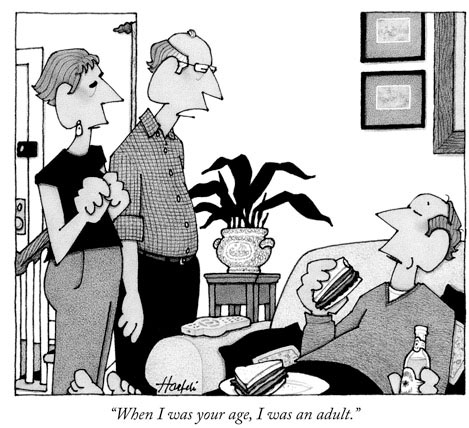
Where schooling became compulsory, independence was put on hold until after graduation. And as educational goals rose, so did the age of independence. Now, from Europe to Australia, adolescents are taking more time to finish college, leave the nest, and establish careers. In 1960, three-quarters of all U.S. women and two-thirds of all U.S. men had, by age 30, finished school, left home, become financially independent, married, and had a child. Today, fewer than half of 30-year-old women and one-third of 30-year-old men have met these five milestones (Henig, 2010).
Delayed independence has overlapped with an earlier onset of puberty, widening the once-brief gap between child and adult (FIGURE 3.14). In well-off communities, the time from 18 to the mid-twenties is an increasingly not-yet-settled phase of life, which some now call emerging adulthood (Arnett, 2006, 2007). No longer adolescents, these emerging adults, having not yet assumed adult responsibilities and independence, feel “in between.” Those in college or the job market after high school may be setting their own goals and managing their own time more than ever before. Yet they may still be living in their parents’ home, unable to afford their own place and perhaps still emotionally dependent as well. Recognizing today’s more gradually emerging adulthood, the U.S. government now allows children up to age 26 to remain on their parents’ health insurance (Cohen, 2010).
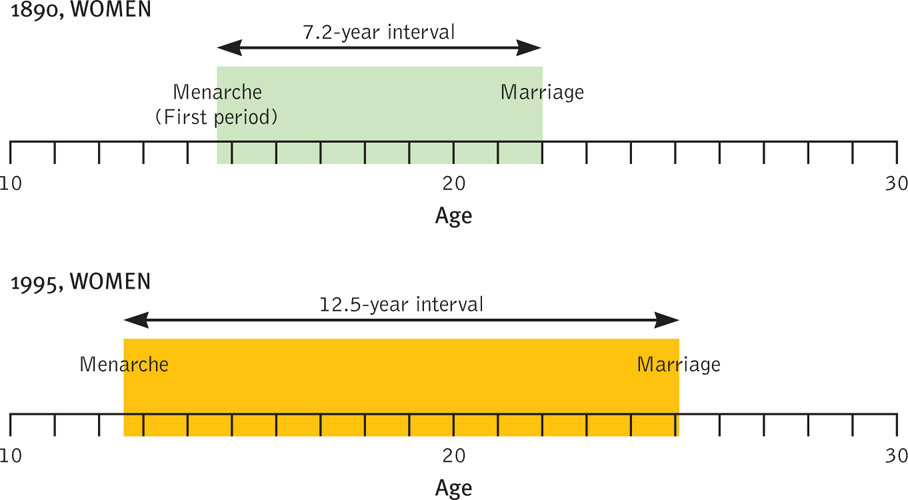
RETRIEVE + REMEMBER
Question 3.8
 Match the psychosocial development stage below (1–8) with the issue that Erikson believed we wrestle with at that stage (a–h).
Match the psychosocial development stage below (1–8) with the issue that Erikson believed we wrestle with at that stage (a–h).
|
|
1. g, 2. h, 3. c, 4. f, 5. e, 6. d, 7. a, 8. b
Thinking About Continuity and Stages
Let’s stop now and consider the second developmental issue introduced at the beginning of this chapter—continuity and stages. Do adults differ from infants as a giant redwood differs from its seedling—differences mostly created by constant, gradual growth? Or do we change in some ways as a caterpillar differs from a butterfly—in distinct stages?
Generally speaking, researchers who focus on experience and learning view development as a slow, ongoing process. Those who emphasize the influence of our biology tend to see development as a process of maturation, as we pass through a series of stages or steps, guided by instructions programmed into our genes. Progress through the various stages may be quick or slow, but we all pass through the stages in the same order.
Are there clear-cut stages of psychological development, as there are physical stages such as walking before running? We have considered the stage theories of Jean Piaget on cognitive development, Lawrence Kohlberg on moral development, and Erik Erikson on psychosocial development (summarized in FIGURE 3.15). And we have seen their stage theories criticized. Young children have some abilities Piaget believed they developed only in later stages. Kohlberg’s work reflected an individualist worldview and emphasized thinking over acting. And, as you will see in the next section, adult life does not progress through a fixed, predictable series of steps. Chance events can influence us in ways we would never have predicted.


Although research casts doubt on the idea that life proceeds through neatly defined, age-linked stages, the concept of stage remains useful. The human brain does experience growth spurts during childhood and puberty that correspond roughly to Piaget’s stages (Thatcher et al., 1987). And stage theories help us focus our attention on the forces and interests that affect us at different points in the life span. This close attention can help us understand how people of one age think and act differently when they arrive at a later age.
RETRIEVE + REMEMBER
Question 3.9
 What findings in psychology support the stage theory of development? What findings challenge these ideas?
What findings in psychology support the stage theory of development? What findings challenge these ideas?
Stage theory is supported by the work of Piaget (cognitive development), Kohlberg (moral development), and Erikson (psychosocial development), but it is challenged by findings that change is more gradual and less culturally universal than these theorists supposed.